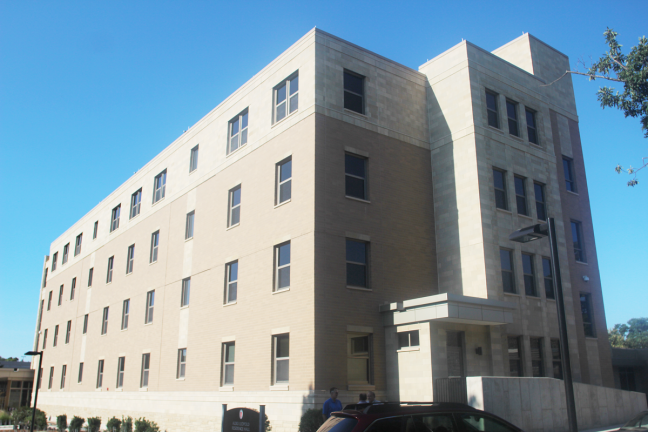According to the 2012 U.S. World and News Report, 25 percent of University of Wisconsin students will live in some form of on-campus housing this year. The vast majority of students that choose to live in University Housing are freshmen who will follow the long-standing trend at UW by living in the non-mandatory, yet “highly recommended,” dorms for one year before quickly scurrying to find off-campus housing. In the past, it was easy to see why students chose not to return to the dorms, as many dorms were perceived as outdated and lacking in amenities that off-campus housing options could potentially offer. UW also often struggled to keep up with housing demands due to lack of sufficient facilities and an overabundance of incoming freshmen. However, since 2004, UW has worked to improve student housing to enhance recruiting. While the renovations were made to attract new incoming freshmen, the new additions to campus serve as prime opportunities for returning students to reap the benefits of sophomore and upperclassmen status.
Throughout the last decade, as the collegiate battle to recruit top students has intensified, housing has emerged as a major determining factor in making a college decision. The Peter Li Education Group’s 2012 College Housing Report showed that 40 percent of the 209 schools surveyed said that the quality of on-campus housing was “very important” in terms of student recruitment, and 51 percent responded with “important.” It became clear to UW that the dorms, including one dating as far back as 1913 and many more not having been renovated for 40 years, could simply not compete.
In response to this growing issue, the university unveiled the “Residence Halls and Dining Services Master Plan,” which went into effect in 2004 and was more recently updated in July 2008. The plan is scheduled to be fully completed by 2020. The specific details of the plan include the renovation of eleven dorms — including Sellery and Witte, the largest dorms on campus — as well as the renovation of six dining areas with a focus on the Lakeshore neighborhood. These plans will increase housing amenities and options while also improving food quality and availability while “[keeping] room rates as low as possible.”
According to its mission statement, “This plan will also allow us to guarantee housing for all freshmen, which is an important component of the University’s efforts to improve the first-year experience. This guarantee will help us recruit and retain the brightest, most capable students from Wisconsin and around the world.”
While the plan’s main focus is to attract new students to campus, and it explicitly states that it does not have the goal of retaining more students for a second year, the structure of UW Housing allows returning students to reap the benefits of improved housing, as they are granted priority status for selecting dorms over incoming freshmen. In this way, returning students could effectively be guaranteed spots in the newer, nicer buildings. Dorms also offer the added convenience of being more centrally located compared to off-campus housing that can be miles away from the UW campus. Further, research conducted by the Center for Applied Economics and Policy Research shows that students who choose to live in the dorms for a second year are more likely to have a higher GPA than those who choose to live off-campus, by up to a full letter grade.
Of course, students looking at housing options for next year will want to get the best deal possible. UW estimates that, on average, students who choose to live in residence halls and those who choose to live off-campus will ultimately pay the same amount of money in terms of the final cost, with dorm students paying more in “miscellaneous” costs but off-campus students paying more in room and board. In addition, off-campus students must pay for utilities, which can become much more costly than the flat rate the university offers.
With all the benefits that staying in the dorms for an extra year has always provided, along with the new luxuries from the renovations detailed in the Master Plan, students currently staying in the dorms should consider returning for another year as it may prove to be the best in terms of amenities, cost and location.
Madeline Sweitzer ([email protected]) is a freshman majoring in political science and journalism.








